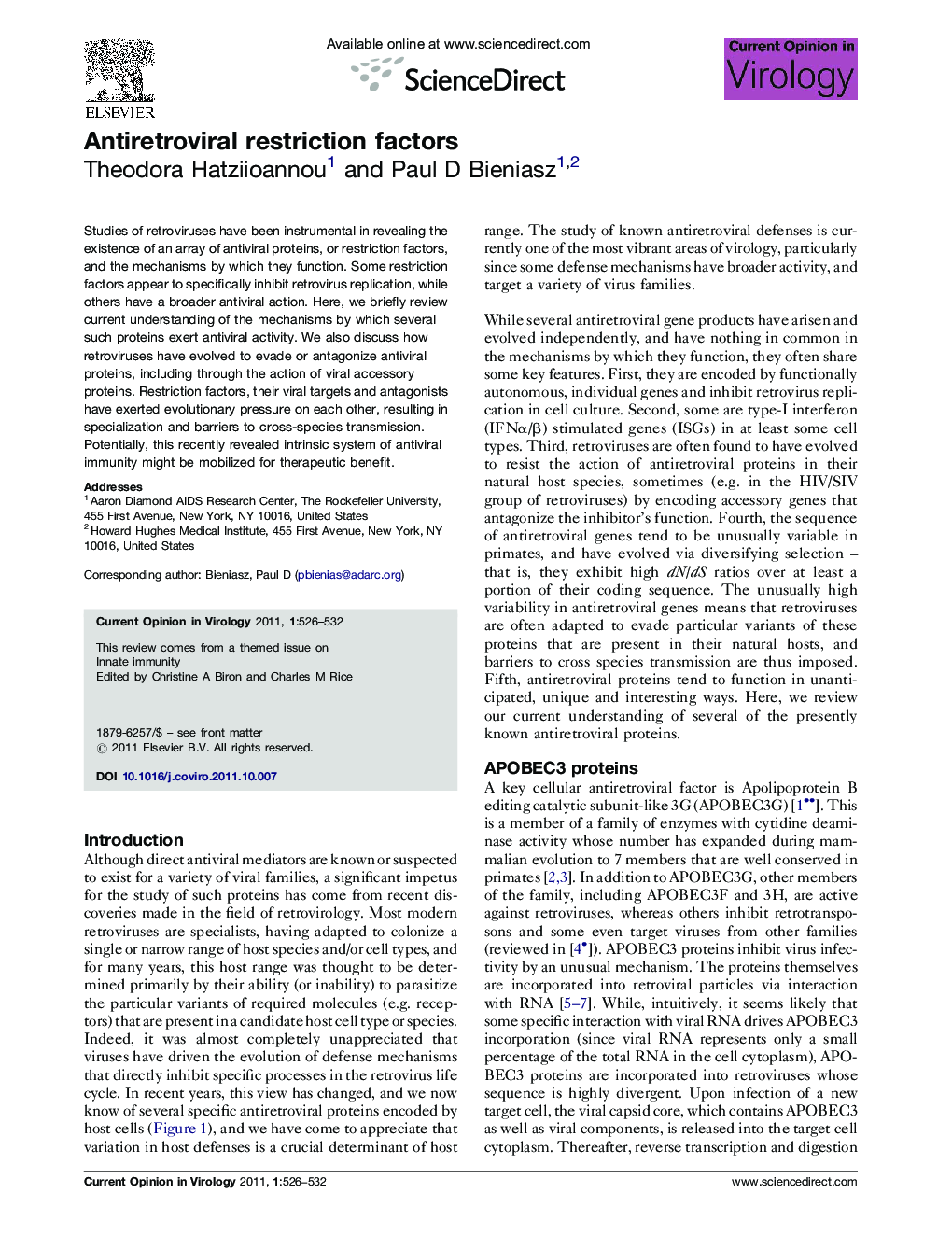| Article ID | Journal | Published Year | Pages | File Type |
|---|---|---|---|---|
| 2473406 | Current Opinion in Virology | 2011 | 7 Pages |
Studies of retroviruses have been instrumental in revealing the existence of an array of antiviral proteins, or restriction factors, and the mechanisms by which they function. Some restriction factors appear to specifically inhibit retrovirus replication, while others have a broader antiviral action. Here, we briefly review current understanding of the mechanisms by which several such proteins exert antiviral activity. We also discuss how retroviruses have evolved to evade or antagonize antiviral proteins, including through the action of viral accessory proteins. Restriction factors, their viral targets and antagonists have exerted evolutionary pressure on each other, resulting in specialization and barriers to cross-species transmission. Potentially, this recently revealed intrinsic system of antiviral immunity might be mobilized for therapeutic benefit.
► Mammalian cells express a number or antiretroviral proteins, termed restriction factors. ► Currently known antiretroviral restriction factors include APOBEC3, TRIM5, KAP1/TRIM28/ZFP809, SAMHD1 and Tetherin. ► These proteins have several unique and interesting ways of inhibiting viral replication. ► Retroviruses evolve to evade or antagonize restriction factors, sometimes employing accessory proteins. ► Restriction factors can impose barriers to cross-species viral transmission.
